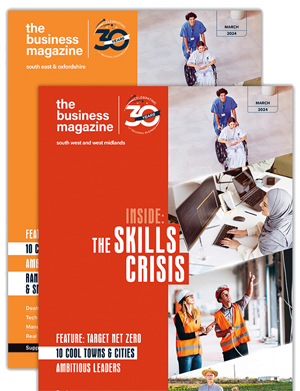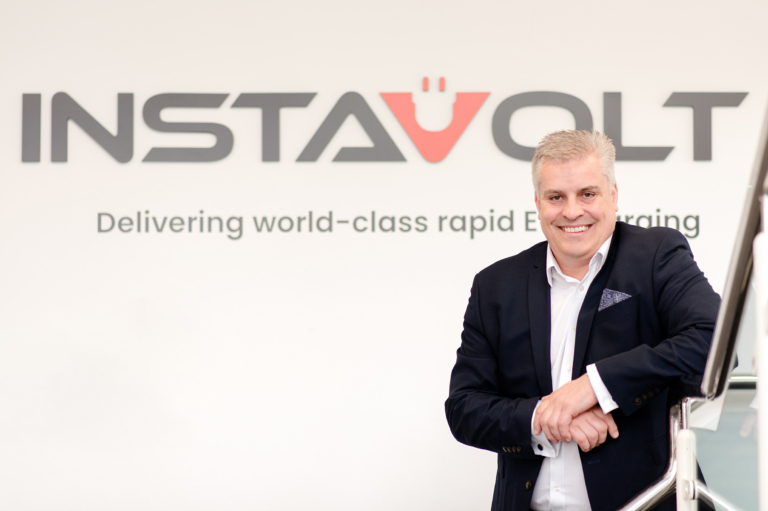Making IT an efficient competitive advantage - the Content Guru roundtable

This Roundtable was hosted by communications integration provider Content Guru in conjunction with The Business Magazine, and discussed the latest information technology trends from BYOD to Big Data, Cloud to CRM, Telephony to IoT and onwards. But frankly, IT for some businesses can be a time and resource-sapping problem, and the constant challenge is …
Can all businesses be cloud-based?
The real question the Roundtable quickly confirmed, is not ‘can they’, but ‘should they’. As with many aspects of the information technology world, it is the suitability of the IT to the operations of a business that should determine its adoption or not; and the correct and optimum usage of the IT that will determine its value to the business.
Tim Walker explained: “It depends on what the company is trying to achieve and the procedures and policies that are right for the organisation. Some very large businesses now operate largely in the cloud, and it can also be cost-effective for some small businesses, using Salesforce.com or running Microsoft Office 365, because that can be a low monthly operating expense.”
Taking that type of IT into the mid-market organisations, with more complex requirements, could be more challenging. “Certainly in some sectors, such as professional services, the chance of them wanting all their IT infrastructure mainly in public cloud services is rare due to concerns around data sovereignty and security concerns. A move towards UK-based more localised providers, offering a more customised private cloud service is preferred by most professional services organisations who are moving their IT out of the offices.
“Our recommendation is always for the organisation to define what it wants to do, and to have a clear IT strategy, before it starts picking off cloud services for its business.”
Colin Blumenthal agreed: “All organisations nowadays are aware of the cloud, and it is up to us as IT professionals to explain to them the benefits and pitfalls. But, I think most businesses now realise they will at some time commence their cloud journey.”
He revealed that around 100 of his company’s 370 clients were now on that ‘cloud journey’. “So a significant minority is now dipping a toe into the cloud.”
Wariness about the adoption of a new IT system was natural – people may have had IT problems in the past – but, “. . people are now on the cloud journey and it would be naive for us to believe that in the next five years there won’t be much more cloud usage by everybody”.
David Murray asked if there were sectors or organisations that would not necessarily suit the cloud.
Professional services were mentioned again and Blumenthal suggested there may be no strong reason to adopt cloud for “organisations where most IT users are in one location, don’t need to be mobile, and geographically the Internet connectivity is not strong.
“There is also a misconception that the cloud is cheaper, but for many business scenarios it isn’t.” On-premise, hybrid and full cloud were all valid options, he added, although cloud prices will begin to reduce over time.
Greg Harris felt that ‘hybrid cloud’ was probably the way forward – “a lot of the people we work with now have all or part of their IT solution in the cloud”. Even though Harris is the co-founder-owner of Cloud Distribution, he accepted that cloudmight not be beneficial in some business circumstances. He exampled a busy doctor’s surgery where a cloud system going offline could lead back to ‘pen and paper’ communication. “Maybe there, a local IT system with a nightly backup would be better.”
“You can very easily get washed into ‘Let’s go cloud’ because it’s the trendy thing to do.” But, cloud can have significant cost and efficiency advantages, he highlighted. “Perhaps the answer is to dip one’s toe first into those applications that are not business critical, then look at extending cloud when there is confidence in proper security and infrastructure being in place.”
Retailer Eamon Wynne, an IT end-user, agreed: “It is a maturing thing, as with all new technology. Dipping one’s toes in the non-essential applications is where we wanted to start.” Furniture Village currently uses very little cloud – mainly for emails – and its critical IT data is hosted at source, but the company is now considering a new
Enterprise Resource Planning (ERP) system potentially using cloud. “It’s an interesting decision based on what you perceive the advantages and risks to be.”
Harris suggested anything about the use of IT should be a commercial decision, since IT was only an enabler of business. Too often IT ended up as ‘the tail wagging the dog.’ The first question should always be: 'Do I need this IT?'
Working in the cloud means that your Internet connection can become 100% critical, and commercial decisions need to be taken to cover that risk.
Thorny questions such as risk v reward
Steve Clarke: “The issue around whether cloud is OK for business has been won. The discussion has now moved on from the use of cloud to more thorny questions: Where is my data going to be and is it secure? Are only my eyes seeing it? What service standards will I get? Am I with a reputable operator who will be around in 4-5 years?
If I have to exit the service how do I get my data back?
“The risks to business are probably more about how people feel about their data moving off their premises, than actual security. Data is actually more secure offsite, but there is still that perception that if it is offsite, it is outside your control.”
Roundtable sponsor Sean Taylor recalled his 25 years working in IT, including within Silicon Valley USA: “No-one today questions the importance of what we called back then ‘the information super highway’, ie the Internet. Cloud is most definitely here, it is significant and important, and businesses can’t hide away from it.”
His company Content Guru had been formed nine years ago to exploit the opportunities of cloud. “Then no-one knew what cloud was, or they did and they worried about its reliability, security, and cost. In the past three years, the discussion has changed to become reactive, with people now wanting go into cloud, and it’s just a matter of how far.
“The most important thing is to look at the business outcomes to be achieved.” Mobility and flexibility might be two. Following the hacking experiences of Sony and other large well-known organisations, security was definitely another, and critical for many clients, he added. “Security will be the big thing we’ll talk about this year and next, but it is really just an operational thing that needs to be buttoned down.”
Walker: “Cloud has become such a catch-all term for every single flavour of offsite IT.”
“Would I recommend that, as an example, a mid-size law firm put all their IT into a huge public cloud service with a global service provider, where they have no control over whose jurisdiction the data is managed? Absolutely, not.
“Would I recommend it uses a smaller provider where the firm’s managing partner can visit the data centre to manage its risk, and also look at a second data centre in another part of the UK? Yes I would, because the localised security around that can be specified at the right level for that organisation.”
Taylor revealed that he was aware of one large company doing exactly that in Germany, using a ‘pay only for usage’ Amazon Web Services (AWS) platform but localised solely to German data storage.
Clarke: “It is not about the technology, it is about the business risk. ‘Do I want to touch the servers in my cloud, or just be happy that they are somewhere in the cloud.’ More and more nowadays, CEOs are happy with the concept of cloud and it’s a decision about the risk being low enough and the rewards high enough to take cloud aboard.”
‘Fluffy clouds’ and sector consolidation
Chris Sykes agreed cloud is a catch-all term, but a technology that is continuing to evolve with many different facets. “We tend to operate with ‘fluffy clouds,’ the next wave of technology coming through, which is fundamentally changing the landscape of IT.”
Such startups and emerging vendors are actually growing very quickly, he noted, with the old guard of major IT companies now simply calling themselves cloud companies. Sykes highlighted how Amazon had rapidly grown to become a cloud market leader, despite competition from established IT stalwarts.
“It’s now a very interesting space. Oracle bought a company a few weeks ago that has technology allowing you to talk directly to the cloud. EMC recently acquired a cloud company for $50 million that has just one customer. I think you are going to see a lot more of these cloud startups being hoovered up by the big boys.”
There was general Roundtable agreement that M&A activity and consolidation was on the increase in the cloud sector.
Let’s talk telephony . . . hopefully on a blip-free line
Telephony (the technology of sound communication, with or without the use of wires) is rapidly developing on the cloud front – but the worry about VoIP (Voice over Internet Protocol) is achieving 100% consistent Internet connectivity, which remains a business concern. VOIP talk may be cheap but it also needs to be heard 24/7.
Walker: “The use of IP in telephony has existed for 15-20 years and hosted versions of VoIP have mainly been adopted by SMEs, although some mid-market businesses of up to 1,000 users now use fully-hosted telephony services. It’s being adopted a bit like hosted IT for similar benefits of moving capital expenditure to operating expenditure. The thing is, you don’t notice a blip in hosted email traffic, whereas if your voice does not have adequate connectivity then you can have at least productivity and at worst a reputational issue, particularly when dealing with customers. That risk of voice blips has put a lot of organisations off until guarantees of service quality can be provided.”
Hosted VoIP has tremendous cost benefits in not having to manage core technology on-premise, but an on-premise telephony system might be operationally more effective, Walker summed up.
Clarke: “It’s true, telephone switches don’t die, but VoIP had a really bad press 10-15 years ago. Internet speed and quality now is a lot better.”
The professional services sector had largely avoided VoIP because it wanted a guaranteed service when dealing with clients, Clarke added. Skype, for example, was often used by SMEs for internal communications, but its quality could not be guaranteed for client contact.
Taylor set about some myth debunking. “We (Content Guru) are very heavily involved in backbone communications and we supply to lots of carriers – BT, Vodafone, Telefonica etc – and every single call we make today is on VoIP. So, the backbone of every single network is VoIP. A lot of networks in many countries, for example
Deutsche Telecom, have completely decommissioned their PSTN (public switched telephony) networks in certain countries.
“At carrier level today every single network is completely robust, and there are now a lot of mid and large organisations who are using VoIP, and often end-to-end VoIP.” He mentioned National Rail, low-cost airlines, utility companies and banks.
Harris noted that there was a quality difference between VoIP and Voice over Broadband.
Taylor agreed but said: “In five years time we will have migrated across and will not really think about it.” It was worth noting that many large manufacturers of PBXs (Private Branch Exchanges) are currently managing a roughly 10% year-on-year decline in demand, while cloud adoption generally is growing at over 20% per year.
Clarke: “The challenge is still the experience of the user.”
Taylor: “To the user they have made a voice-call and it didn’t work properly. But, the real challenge is that people don’t understand how to end-to-end deliver it (consistent quality)."
Unified Communications to the rescue?
Unified Communications (UC) enables ‘anyone, anywhere, anytime’ collaboration of all of a company’s voice, video, data, email, messaging and mobile communication applications.
Sykes: “One of the best business decisions I’ve ever made was getting rid of 140 telephones. We went UC 18 months ago using Microsoft Lync and it has transformed our business. We have had teething problems, but basically communication now goes through our PCs or mobiles with us using Bluetooth headsets.”
UC had produced benefits in productivity and some cost-saving, but noticeably in business culture with staff no longer stuck at their desks for much of the day, explained Sykes.
“A lot of our clients in the US are also using LINK and through UC we can now see if they are at their desk or in a meeting.”
Blumenthal saw voice over broadband as a market 2-3 years behind the current cloud journey for most clients, who are currently keener to progress their data to the cloud. “Only a tiny amount are on the voice over broadband journey.
“We (Complete IT) are interested in finding a hosted telephony solution that is really going to work for our clients. For us, it is all about the connectivity our clients have to the public Internet, resilience, quality of service, the telephony solution that proves most reliable, and provides cost-savings for our clients, who are largely SMEs with 20-30 users, located in contrasting areas, some with good connectivity available and some with poor.”
Taylor pointed out that UC was reflecting the business world of modern clients, who are often on the move, using various different Internet-enabled devices, in different locations, and importantly used to business, social, voice, text and visual channels of communication – usually at low or no cost. “In 10 years time we will look back and say: 'How did we do ever do things differently?'
“You would be surprised how many seriously large enterprises, even central government, use this. It is definitely happening, but quality of service delivery is the missing piece at the moment."
Collaboration continues to drive IT development . . .
Sykes mentioned how UC had improved relationships and collaboration among his team and clients, creative support and service providers, leading to increased overall productivity. “It’s not just about better communication. For example, we are now sharing desktops with clients in real-time. It speeds up the whole business process.”
Harris highlighted that much IT development in the past had focused on the desire of companies to collaborate more closely with clients, and business associates “ ... that you might never see, outside or even within your own company”. Video-conference suites were as much to do with increased collaboration and understanding as they were reducing travel and accommodation costs, he remarked.
“Video-conference suites,” exclaimed one Roundtabler. “That room that was always empty because the executives were on a flight to Helsinki or somewhere.”
Taylor: “Times move on. A lot of video-conferencing has now gone over to desktops, and the technology has also evolved.” He exampled Ridgeway Motor Group which now provides customers with ‘Workshop Window’, a video-conference style of service. This mobile app allows a mechanic to visually show and explain to the customer the repair that needs to be made to their vehicle.
Operating with 40 UK retail outlets, Wynne said his company had “dabbled with LINK” but the traditional nature of furniture retailing with its important salesperson-customer shopfloor relationship was still strong.
However, he recognised that customers were more accepting nowadays of an ‘omni-channel’ approach – in which they gain the same valued shopping experience whatever communication channel they choose to interact with the retailer. “You can see exciting opportunities for IT applications, like that at Ridgeway, coming into other big-ticket areas where customers want to see or
understand more about something. There’s massive scope, but at times face-to-face is still essential.
“Right-sourcing is the key, finding the right use for a technology to help you gain a competitive advantage, reduce cost or get something done more efficiently,” Wynne added.
. . . and mobile device cameras
Sykes agreed: “There will always be a place for face-to-face but the invention that has changed everything is the digital camera, particularly on our phones. It has become omni-present.”
Wynne confirmed that Furniture Village customers were using cameras to a far greater degree. “Cameras have become such a part of our lives that there is no way that they will not translate into the desktop communications we are having with each other, whether with customers or suppliers across the world.”
Murray pointed out those born in the digital generation (Generation Y) would very likely see a camera on their mobile as simply another app, rather than a standalone device available in shops, increasingly viewed as niche retailers.
…. but maybe not QR codes
“Have QR (quick response) codes taken off?” asked Murray. “Not really,” came the Roundtable reply. “They look too techie.”
Clarke recalled seeing a huge QR code on the back of a lorry. “What’s that about? How are you going to scan it? Do you take a photo? While you’re driving?”
Blumenthal said three years ago he had put his company’s website QR code on all business cards. “I thought it would be useful. Has it been? No.”
“The interesting thing is that people still carry business cards,” Harris noted. “You would have expected that to die off 10-15 years ago, but I have just put in an order for more cards.”
One explanation was that the exchanging of business cards was universally accepted and the business equivalent of a handshake, yet exchanging personal details using technologies such as the ‘bumping’ of smartphones was contrived and only available to specific app users.
What technologies can help businesses work smarter?
Once again it depends on what your business is, said the Roundtable.
Walker suggested rapid improvement to high-speed connectivity was now helping most businesses, including those in relatively remote locations, to gain access to cost-effective cloud services. “The prevalence of high-speed connectivity at increasingly competitive pricing, underpins the shift to hosted/cloud services. In addition, since 2008/09 people have been wanting to move away from capital expenditure to Op-ex and the IT world has followed that. “We (Taylor Made) put a new cloud monitoring platform in place in 2010 that has transformed the availability of monitoring services to our SME customers much more affordably than ever before.
“These are ‘under the radar’ technical shifts that are bringing real benefits to businesses.”
Clarke: “Until recently, a lot of businesses have not been able to exploit the amount of data (Big Data) that they possess, either internally for better understanding of their customers, or potentially as a new revenue stream.”
Many businesses have years of customer accounts data. “If they were to ‘anonymise’ that and drop it into a data warehouse for analysis, they might very well move ahead of competitors through their understanding of that data, or even sell it back to their customers as an open portal management tool.
“Five years ago it was almost impossible to drill down and understand such data, but now we are getting the tech tools to analyse and use it. Exploitation of business data is going to be a huge benefit in terms of revenue, transparency and ‘stickiness’ with clients.”
Sykes agreed that most companies did not beneficially manage their data, but pointed out that while there are now Big Data companies tackling the issues of structured and unstructured data “ ... a lot of data will still be useless”.
Taylor: “There is a lot of really valuable untapped data out there, but you have to be able to make it rapidly available and relevant, like Google.” Twenty years ago business sector research was time-consuming, often required travel, or a personal network of specialised contacts. “Now it can be available in a fraction of a second, and we are conditioned to that.”
People power, CRM, BYOD and security standards
The key driver for such analysis and research was growing ‘people-power’, said Sykes, Businesses wanted to learn more about their customers, product or service purchasers, and end-users in order to improve their CRM (customer relationship management). Communication channels are becoming more diverse and non-traditional as people work, socialise and enjoy their lives in less structured ways. Sykes noted how a colleague was frequently using WhatsApp messaging to make contact rather than the company’s email or phone. “We are now empowered to work the way we want to work.”
Blumenthal raised the issue of people-power being tangible through BYOD (Bring Your Own Device) adoption in some companies. “But, there are still issues over data security. You need to have correct policies and procedures in place and the correct systems to ensure control over any BYOD devices, but how many SMEs have that? I would suggest very few. We can preach to them, but whether they listen is another matter. It comes back to the perceived level of risk and the cost of averting that risk.”
Taylor: “You need more Sony-style hacking horror stories or big fines for breaking regulations before people will take it more seriously.” Regulations also needed to have teeth. The Telephone Preference Service still failed to stop phone cold-callers, he highlighted.
Clarke note that recognised security standards such as IS0 27001 were “more or less useless for SMEs to implement because they have been designed for IT functions within large corporations. The ISO ‘monolith’ and its implementation costs are not practical for SMEs. Too many companies were surviving on “string and sticking plaster security,” he added.
Taylor: “What frightens me is that Sony did have good security in place and yet it still got hacked.”
Harris: “Organisations like Sony may have spent millions and millions of pounds securing the perimeters of their premises, but companies today need to realise that the edge of their IT network is wherever their user is. He could be on his laptop using an unprotected broadband connection in China, so you need that device secured.
“Within the current businessworld it is very easy to forget our IT lessons. We have seemingly unlearned all the stuff about security of computers and laptops in the office when it comes to remote working using mobile phones.”
Clarke said training was the answer. “It’s all very well having massive amounts of technology to secure yourselves but if you don’t train your people to understand the need for security and follow IT procedures then you might as well forget it.”
Taylor: “We overlook these things because of the convenience of IT.”
Google is now a verb
“Google is now a verb,” said Wynne. “People gain access to information on the move. Today, many of our customers access the Internet on their mobiles instore, using Google to inform themselves not only beforehand, but during their shopping with us.
“It’s a massive challenge for us to keep on top of mobile information and people-power. The information that people have access to in their hands whilst making a decision is incredibly powerful.
“It’s very easy to provide your customer with lots of data, but the information needs to be useful, accurate and presented for quick use or decision-making. The timespan between knowledge and decision-making has shortened so much nowadays.”
Sprouts that enable 3D printing?
Generally, the Roundtable felt that 3D printing technology did not have a currently-obvious widespread future market, although it definitely had applications in some specialist areas. Medical, manufacturing, prototype design (Formula 1 grand prix), spare parts were all highlighted. Cost was also a factor, and lower pricing as the technology developed may help its market.
Sykes mentioned that HP had already produced a product for home users – the revolutionary HP Sprout. This is an all-in-one desktop PC plus, projector, cameras, dual display, touch input, and 3D scanning that also enables 3D printing. It’s probably ahead of its market and at around $1,900 outside most household budgets, but who knows … smartphones were science fiction just a few years back.
The Internet of Things: Will we run out of addresses?
“Isn’t the explosion in the use of Internet-enabled devices predicated on the move to Internet Protocol version 6 (IPv6),” queried Clarke. “We are running out of IP addresses and if we don’t move to IPv6 soon there will be problems with millions and millions of devices such as wearables coming down the line.”
Harris: “Nobody wants to do it because it will be expensive. It has been around as an issue for some time and seems like it’s ‘Who’s going to blink first?’
The big question, the Roundtable agreed, was ‘Who owns the Internet?’ The answer could be that one of the big American network vendors would make the first move; otherwise the Internet of Things (IoT) would be delayed, if not stymied, by lack of IP infrastructure development.
Taylor agreed but felt IoT would happen because the enhanced connectivity and possible commercial applications were so advantageous. He mentioned how IoT would enable travel and insurance sectors, healthcare monitoring and management of the home. Utility smart grids and sensors in the home might still be some way off, he felt.
“Do we really want to follow the Hollywood stuff?”
Wynne: “Applications of this type of technology will find a home in time, but at the moment we are not ready for it.”
Clarke felt that people might soon start to get concerned about the amount of personal information being gathered by smart technology. “They’ll begin to wonder who else is accessing this information and think they’ve walked into Big Brother.”
Wynne: “It’s true. If technology is embedded in a product, then you have to be careful not to cross a line with which the purchaser is not happy, and feels something has been foisted upon them.”
Taylor: “It’s an age thing. Teenagers nowadays don’t care about sharing their information in the way the 30-and-upward demographic does.”
Clarke: “It will be interesting to see if that ‘over-sharing and not caring’ stays with them as they get older.”
Embedded technology and living longer
Sykes mentioned an interesting Gartner announcement. “In 2020 they say the average human lifespan will be six months longer due to predictive health technology embedded in wearables.” Personal fitness and health assessment was now a growing market for wearables such as Fitbits, Jawbone, FuelBand, and Apple Watch.
He had even heard of one CEO who was considering mandating that his senior executives all wear Fitbits so the company could constantly monitor their health.
Clarke suggested reading a novel – The Circle by Dave Eggers – for a thought-provoking view of what the future of wearable technology and information sharing might become.
Sykes explained that the CEO’s view on Fitbits was prompted by a recently employed executive having died following an aneurism. The difficulties and costs of gaining and retaining talented employees in competitive markets might merit using such technology to keep them healthy – for their own sake and in the interests of the company.
Clarke mentioned that drug-testing was also becoming more prevalent within US companies.
Sykes exampled one company he knew that undertook employee urine testing.
“I think that’s called IP,” joked Taylor.
Participants
Colin Blumenthal: Co-founder and MD, Complete IT
Steve Clarke: Co-founder, Freeman Clarke, provider of part-time IT directors
Greg Harris: Co-founder and sales director, Cloud Distribution
Chris Sykes: Chief executive, Volume, global provider of digital content
Sean Taylor: Managing director, Content Guru
Tim Walker: Managing director, Taylor Made, IT managed services provider
Eamon Wynne: Commercial director, Furniture Village
David Murray: Managing editor and publisher of The Business Magazine, chaired the discussion














